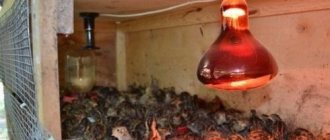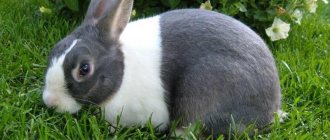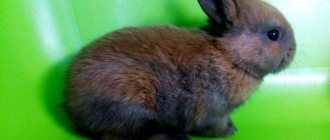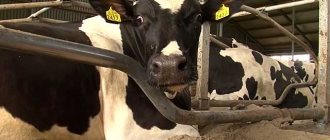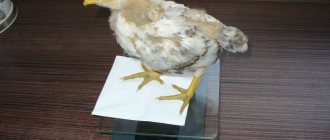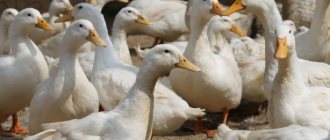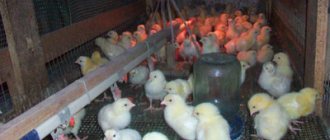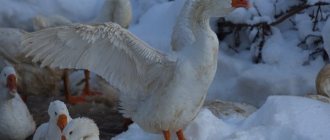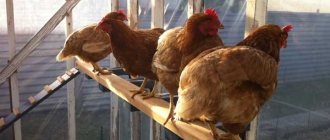One of the many benefits of living in a private sector is the opportunity to raise pets. If the territory allows you to keep animals outside in the open air during the winter, you have a chance to play the role of a real farmer on your own plot.
Some approach this matter from a business , while others breed livestock for purely personal consumption. And one of the beneficial, in many ways, types of domestic animals are goats. If there are clearings near you where you can graze them, this is an ideal place to start.
In this article we will describe in detail all the nuances of keeping goats at home, and also consider what breeds of goats there are, with photos and descriptions of the breeds attached.
How to keep a goat at home
Keeping goats at home will be easier for beginning farmers if you start doing this in late spring. This way you can reduce the initial costs of feeding individuals. The diet of different species is slightly different, but fresh pastured grass is an essential component and their favorite delicacy. However, not all herbs are beneficial.
Species such as chamomile, wormwood, mustard, horsetail, and tansy spoil the taste of meat and milk. And they can even poison the animal. Therefore, it is worth inspecting the future pasture in advance for the above plants.
For dairy breeds, it is worth adding concentrated feed and silage to the food. Water temperature also matters. Cold water provokes colds and is extremely dangerous during pregnancy.
When breeding goat breeds intended for shearing, more hay is added to the diet. This will reduce the level of substance produced by the sweat glands. Then the wool will be easier to process. It is also recommended to use species-specific feed and grain feed .
They are useful with a complex of nutrients. But it is worth paying attention to the fact that the wool can become coarse from excessive use.
Feeding rules
Proper nutrition of the livestock is the basis of goat breeding. The diet of different individuals must be compiled separately, depending on factors such as:
- age of the animal;
- his health;
- target purpose.
In other words, the diet of young goats is somewhat different from feeding babies or pregnant queens.
When goats are kept in a barn all day, they are given food four times a day, grazed on pasture - two meals a day is enough. During the warm period, when there is enough green mass, the animals receive the required amount of food by grazing - it is in the summer that they have maximum milk production. But no matter how much greenery the animals eat, they need to be fed additional nutrition.
Summer grazing is very important
- about 200 g of concentrated feed;
- up to a kilogram of vegetables and root vegetables;
- supply of dry hay for the night.
Goat breeds with photos and descriptions
For those interested in the extraction of down and wool, we recommend that you familiarize yourself with the following breeds:
Goat breeds for wool
Saanen goat photo
Angora goat photo
Don goat photo
Orenburg goat photo
Toggenburz goat photo
Gorno-Altai goat photo
The undisputed leader in wool shearing productivity is the Angora goat breed. Having a decent fiber length, about 25 cm, Angora wool has high strength and elasticity. At the same time, it is quite elastic and stretchable. It produces warm and beautiful things that are highly valued all over the world.
As for fluff, the situation here is ambiguous. Before you make your choice, you should figure out what kind of fluff you are interested in and for what purposes. Because the technological properties of down vary.
The fluff of Orenburg goats has the highest quality. It has particularly elastic, soft and silky properties.
The Pridonskaya breed is also high in quality, but is distinguished by more complex processing. The products obtained from it are somewhat rougher.
The leader among the listed species in terms of fluff yield belongs to the Gorno-Altai goat. The average yield of down yarn is at least 60%.
Having decided what breed you need, why and in what quantity, you can safely
Dairy goats photo
If you are focused on milking and milk as your main product, then you should choose a dairy type of goat.
It includes such types as:
Gorky goat photo
Toggenbur goat photo
Russian white goat photo
Each of these species is characterized by increased productivity. The average annual milk yield for some of them is over 600 liters with proper care and feeding.
To get similar numbers, it is very important to purchase not only a good breed, but also choose the right goat when purchasing.
There are important criteria that you should definitely pay attention to if you do not want to buy a sick animal, which will bring you a lot of extra, unnecessary hassle and loss of investment.
Breeds
Or rather subspecies . There are four in total:
- Dairy.
- Meat.
- Woolen.
- For decoration (rare Vedas).
Goat farming for beginners means minor mistakes in working and caring for simple livestock. And it is advisable to start with a dairy local breed. Such goats will not be burdened with seasonal haircuts, and if you are lucky with a goat (uterus), you will not have to wait long for offspring.
Goat breeding
Breeding goats at home
If your plans include increasing the number of livestock, then it is worth considering mating methods. There are three types of mating:
- Free;
- Harem;
- Manual.
The advantages of free mating are its simplicity, since human participation in the process is minimal. It is enough just to keep goats ready for offspring together with goats. The breeding season usually lasts about two months. The disadvantages include the irrational use of the sire due to the short breeding service life. Lack of control makes it impossible to trace offspring.
In a harem mating, up to 30 heads of selected goats are involved, with one goat placed in the stall. The obvious advantage of this method is the control of origin, but the disadvantage still remains, as in the previous option. Irrational use of goats.
The third type requires the most direct human intervention during the mating process. This will require more time and effort, but the result is the most effective relative to the first two options. For manual mating, a special machine for the goat is used, where it has to be fixed. This method gives a 100% guarantee of fertilization and allows you to keep an objective account of all factors. A specially pre-selected breeding goat is suitable for all this.
The breeding goat is bred in special, separate conditions, with an individual supporting diet. In addition to the fact that he must have all the external factors desired for offspring, it is also worth paying attention to his pedigree. What productivity numbers did his predecessors show? A normal, adult male is capable of fertilizing up to fifty goats during the breeding season. It is important to ensure that the food you eat contains phosphorus and vitamins A and E. A lack of iodine can lead to a decrease in fertilization function.
The age sufficient for mating in goats occurs after the fourth month of life, but at the same time, the live weight of the animal should not be lower than 32 kg. With proper care, this weight is gained by approximately 7-9 months.
Childbirth
As the time of birth approaches, changes in the goat's behavior occur. It is important to identify these changes in time. At this time, the female should be transferred to a separate room and special food.
When the first signs of the approaching lambing appear, a place must be prepared for childbirth and subsequent maintenance of the babies. You can determine that labor is approaching by the following signs:
- lowering of the abdomen;
- swelling of the udder and release of colostrum;
- weakening of the pelvic muscles, palpation of the vertebral tendons;
- rapid absorption of food;
- removal of the mucus plug;
- swelling of the external genitalia;
- slight increase in temperature.
How to prepare a goat for birth?
Two days before the expected lambing, it is necessary to adjust the goat’s diet: abandon succulent feed in favor of dry feed. If signs characteristic of approaching birth are detected, the animal should be fed with warm water and fresh hay.
30 days before lambing, you need to stop milking so that the kids receive more nutritious and healthy milk. It is necessary to stop milking the goat in stages, starting from the 4th month of pregnancy.
When the mammary glands become hard, this may indicate stagnation of milk. To help, it is recommended to express excess milk.
How is childbirth?
Before lambing, the pen in the barn is cleaned. A couple of hours before giving birth, the female becomes anxious. At this time, the goat should not be unduly disturbed - it is better to leave it alone. The duration of the first lambing is about 2 hours. As a rule, childbirth takes place without human intervention.
Initially, a bubble containing liquid is removed, and then the baby is removed head first.
The mother must be given the opportunity to lick the babies, only then can the baby be wiped with a clean rag or dry straw. Remove 2 cm from the belly, tie the umbilical cord using a thread treated with iodine, and cut it 1 cm above the ligation site.
Some time after lambing, the placenta is delivered and should be removed to prevent it from being eaten by the goat. Dirty litter must be replaced with new one.
During the first week after the birth of the baby, milking is carried out 5 times a day. All the milk must be milked until the end.
Benefits of goats for humans
Breeding and keeping goats at home provides several types of products that are in demand.
For example, goat milk. For a city dweller accustomed to packaged cow's milk, the taste of goat's milk may initially seem very specific. But this is just a matter of habit. And if you take into account a number of healing properties inherent in goat milk, then the choice will be obvious.
Here are some strong arguments in favor of the milk that goats provide.
It is better absorbed by the human body. This is especially true for children's diets, since the content of mineral salts in goat's milk and its fat content are an order of magnitude higher than that of cow's milk. Ideal for making homemade food products, it stands out for its taste and nutritional value.
People suffering from stomach and liver diseases highly value goat's milk for its healing properties and prevention of intestinal flora, due to its bactericidal properties, which kill harmful microbes in the intestines.
Undoubtedly, animals raised at home will provide a much higher quality and natural product for consumption than an analogue purchased on store shelves.
In addition, milk is not the only advantage in choosing to raise goats.
Goat meat is rightfully considered a healthy and dietary product. It is rich in all amino acids and microelements necessary for the human diet. It also has unique properties. Very low cholesterol content in its composition, compares favorably with beef and pork meat. Goats are not susceptible to some serious diseases, which is also important for our health.
Another reason to start goat farming is their fluff and wool. It is worth considering, however, that for these purposes it is worth choosing a certain type of goat. Because not every breed is suitable for these purposes.
In addition to all the listed benefits for personal consumption, you can also earn additional income by raising goats. Selling the same milk, meat or wool can even become the main source of income, with the right approach.
Before you start raising goats, you should clearly understand what type of product is your priority? This will help you decide on the type of animal when purchasing for the first time. There are also slight differences in the diet of feeding, care and grazing.
The age factor is also important. The greatest productivity is shown by individuals before the third birth. Starting from the fifth lactation, milk yield begins to fall. The younger the age, the better.
Goat housing
Although goats are quite unpretentious in feeding and keeping, they need to be properly equipped with pens and premises (Figure 4):
- In pastures, it is imperative to build camps from light shields so that animals can shelter from bad weather.
- Winter pens and premises must be strong, dry and draft-free. These animals do not tolerate moisture well and can easily become ill in a cold, damp pen.
- When housing in stalls, it is necessary to provide the function of lighting and darkening the room. Additional lighting will help animals accumulate vitamin D, and optional darkening will artificially reduce the length of daylight and stimulate hunting.
- In pens, you need to regularly change the litter, clearing it of manure. Dirty bedding can cause hoof diseases, and if there is a lack of certain vitamins and microelements, animals can begin to chew dirty straw, causing gastrointestinal disorders.
- It is recommended to equip separate rooms for mating and goatling. They should always be warm, clean and dry.
- When kept in pens in winter, animals should be regularly taken out for walks, maintaining physical activity and stimulating the production of vitamin D.
- In each pen or shed, you need to equip a separate place for animals to rest with deeper and softer bedding.
- On average, each pen should have approximately four square meters of area per individual.
Figure 4. Arrangement of a barn for keeping goats
Feeders and mangers for food
When housing in stalls, it is necessary to stock up on special equipment for feeding. Basically, roughage is given to animals in special bases located in pens. Feeding indoors is possible only in very severe frosts. Before each feed distribution, the flock must be dispersed to the sides.
The following are the most common types of goat feeders (Figure 5):
- A manger without a bottom;
- Nurseries in the form of gratings attached to the walls;
- Nursery-feeders with special troughs at the bottom for concentrated feed.
Figure 5. Types of feeders
The last type of feeder is considered the most successful, since leaves and remains of dry food fall into the trough over time, which animals can also feed on. When installing manger-feeders, the grid is installed straight or with a slight slope forward. You can make feeders yourself. However, it should be taken into account that separate containers are provided for each type of feed (Figure 6).
Figure 6. Schemes of feeders for various types of feed: a, b - for roughage (1, 2 - nursery and feeder), c - for combined feed (1 - trough for concentrates, 2 - nursery for roughage)
You should also take care of proper watering. In the warm season, it can be carried out using ordinary troughs, filling them with running water. In winter, it is necessary to equip special heated feeders, since drinking cold water can cause colds, diarrhea, and, in pregnant females, miscarriages.
When drinking, animals should be divided into groups and allowed to approach the water trough in small batches. You will learn practical recommendations about the internal arrangement of a room for goats from the video.
Stall dimensions
Goats can be kept in the same room as cattle, but if you plan to only breed goats, a separate barn is built for them. It is placed in a dry place with a slight elevation, and a closed paddock for walking is set up next to the room.
The size of the goat's rue depends on the number of individuals. The optimal ceiling height is 2 meters and the length is 4.5 meters. You can build a building from any materials (logs, boards or bricks), but there should be no cracks or drafts inside.
Figure 7. Individual stall dimensions
It is better to arrange separate stalls for each individual, where they are kept without a leash. The width of the stall is 2 meters and the length is about 1.8 meters. If the barn area allows, the stalls can be made wider so that the animals feel free and do not reduce milk yield. A small door (about a meter high) is made in the front part. You can hang a feeder on it. Drawings of the stall are shown in Figure 7.
Care equipment
Caring for goats requires the use of certain equipment. First of all, we need feeders, nurseries and drinking bowls. But they are not enough to fully support animals. Since these are quite active animals, a fenced paddock is set up next to the barn, in which feeders can also be placed or salt licks can be laid out.
Additional equipment includes everything necessary for milking and a first aid kit, which may be needed for the prevention and treatment of diseases. The first aid kit should always contain disinfectants, antiseptics and antibiotics that will help cope with most diseases. It is also recommended to include anti-parasite products, bottles and pacifiers for feeding newborn babies, and special scissors for trimming hooves.
How to choose a goat when buying
When buying a dairy breed, first of all, you should look at the appearance. From it it is easy to draw a quick conclusion about the health of the goat. Good appearance features include shiny coat, smooth and dense skin, strong bones, wide chest and hips. The ribs are rounded, the stomach should be barrel-shaped and voluminous. The individual's paws and back should be straight. Otherwise, the individual is unhealthy and the purchase will not be profitable.
It is also important to examine the jaws. The closure of the upper and lower parts of the jaw must be uniform, otherwise the feeding process will be difficult and the milk yield will be significantly reduced.
Particular attention should be paid to the main “apparatus” – the udder. Moreover, this should be done before and after the control milk yield. A good dairy goat does not have an udder that is too fleshy. Elasticity, volume and lack of hardening are signs of good milkiness.
The udder nipples, ideally, should be neither long nor short – medium. After milking, it is worth once again inspecting the udder of the goat you are purchasing. The presence of small wrinkles on the skin of the udder indicates decline, and, consequently, high productivity. You can take it and start making your first purchase.
Creation and storage of feed reserves
It is necessary to create reserves in advance so that the goat does not remain hungry for a certain period of time. This could have a negative impact on her health. Therefore, it is important to understand how much feed one goat will consume over a certain period of time. Here is the approximate consumption per day:
- Young (up to one year). About 2 kg of hay, 0.5 kg of concentrated feed for males and 0.3 kg for females.
- Adult goats. 5 kg of roughage. During bucking you need to add 0.2 kg of concentrate per day, and when suckling - 0.4 kg.
- Adult goats need 2.5 kg of roughage and 0.5 kg of concentrate. Also 1.5-2 kg of succulent food. Before mating, you need to increase the amount of concentrated feed to 1.5 kg.
- Little goats. Before keeping in the stall, 100-200 grams of concentrates per day, feed hay and grains in excess. After beating, 300 grams of concentrate for goats and 200 grams for female goats.
Based on these numbers, it can be calculated that a one-year-old goat eats about 360 kg of hay and 60 kg of concentrate during the stall period (180 days). At the same time, do not forget that goats should be fed with brooms made from tree branches. This way, her milk yield will be maximum, because in this way you will enrich the diet with minerals and vitamins.
How to determine if a goat is pregnant
There are several methods to determine conception. If a goat after mating does not show interest in mating for up to 22 days, measurements can be taken to determine the content of estrone sulfate in the urine or milk. Or palpation by an experienced goat breeder to check for hardening of the uterus. There is also a modern method - ultrasound scanning, which will cost more than palpation.
The first pregnancy is easy to notice by the development of the udder after 4 months. In older individuals, changes begin after 5 months. The goat's belly takes on a barrel-shaped appearance. A normal pregnancy lasts on average from 143 to 154 days. The goat is gradually gaining weight and this moment should be clearly monitored and duplicated by an increased content of microelements in the diet. Shortly before goatling (about 4 weeks), it is necessary to give a series of injections of group A vitamins and take the goat out for sunny walks more often to naturally enrich the body with vitamin D.
Shortly before goat mating, the individual's behavior changes. Restless behavior, bleating, digging of litter, refusal to eat - all these are symptoms and by which you can determine that there is no more than a day left before the start. There may be a slight decrease in body temperature. Normal numbers can be considered 39-40 °C.
If the individual is healthy, then the goat breeding process occurs without human intervention, but for the first time it is still better to invite an experienced goat breeder. At least for consultation. And if complications arise, you will receive visual help and be able to save the animal and its offspring. Some nuances are worth seeing in person rather than reading.
After a successful birth, no later than an hour later, the little goats must be fed with their mother’s colostrum. If the kids are dairy breeds, then it is worth separating the newborns from the mother. And over the next ten days, continue to feed them using a pacifier, in a separate stall. Important point. The stall must be insulated.
In the first month, goat kids should eat at least 4 times a day. Afterwards you can reduce the numbers up to 3 times. After the first 10 days, you can give oatmeal and semolina cooked in milk as food, gradually adding hay and fresh leaves to the diet. After 20 days, it is necessary to accustom the goats to feed suitable for their breed. Well, then slowly start walking with the general herd.
Keeping goats at home will not be an easy task for beginners, but it is not particularly difficult either. Raising goats will provide you with a high-quality, environmentally friendly product that you can be confident in because you raised it yourself.
Keeping goats
Since goats are considered one of the most unpretentious animals, almost any pasture is suitable for them. The only exceptions are lowland, swampy areas and water meadows. With increased humidity, helminthiasis begins in individuals, hoof diseases may appear, and the nutritional value of the grass in such areas is low and not sufficient for normal development and productive lactation (Figure 1).
Often, a transhumance system is used in pasture management. This is especially true for mountainous regions, where different climatic conditions can be found in the same geographical area due to differences in meadows and fields in altitude relative to sea level.
- The presence of a flock on pastures is often seasonal, and the use of certain areas for grazing is determined by the time of year.
- In autumn and winter, the herd is transferred to flat and lowland pastures. During this period, animals feed mainly on wormwood, saltworts, and near rivers – small trees and shrubs. In some pastures there are also cereal plants. Irrigation canals and natural reservoirs are used for watering.
- Winter pastures, where wormwood mainly grows, are not able to fully satisfy the body's need for nutrients. Therefore, even with grazing, in winter artificial feed is included in the diet: rough and juicy, as well as concentrated.
- Winter grazing is complicated by weather conditions. In case of severe frosts and snows, when it is impossible to find food on your own, there must be a supply of food. In addition, for individuals who are on pastures in winter, it is necessary to create shelters from strong winds or frost. They are called bases, and are built from panels, which are covered with straw for insulation.
- In spring, winter pastures quickly restore vegetation, and animals begin to rapidly gain weight. This is extremely important, since it is in the spring that many farm owners begin the brood campaign. As the amount of feed on pastures decreases, queens and young animals are driven higher into the mountains.
- Summer grazing allows you to quickly increase the weight of animals, since such areas have excellent food and water conditions. It is on summer pastures high in the mountains that castration is carried out, cubs are separated from their mothers and groups are selected for mating.
Figure 1. Summer and winter maintenance on pastures
It is worth noting that in some farms only newborn males are separated from their mothers, and females are left until the next season. This helps the females get stronger and survive frosts and cold, preparing for mating in the new season.
Note: The flocks are transferred to the valleys in September. In this case, strict order is observed. The breeders and queens with their cubs are taken away first. The flocks of young animals descend next, and the last to be transferred to winter pastures are the individuals intended for slaughter.
The speed of translation directly depends on weather and climatic conditions.
Mating in this case takes place already in October, after which the livestock is distributed among winter pastures.
An interesting technology was developed in Gorny Altai. In the summer, the flocks are grazed in valleys covered with rich vegetation, and in the winter they are moved to the southern slopes of the mountains, where the snow cover is thin, so much less complementary feeding is required. For overnight stays, special light pens are erected.
An important element of pasture maintenance is daily watering. The exception is pastures with lush grass and cool weather. In such conditions, animals can be given water only once a day. Examples of industrial and homemade drinkers are shown in Figure 2.
Figure 2. Industrial drinking bowl and homemade drinking bowl made from car tires
Watering is best done early in the morning, before grazing, and in the afternoon, after a break before evening grazing. On hot summer days, watering should be done every one and a half to two hours. Water from stagnant bodies of water should not be given, as this can lead to helminth infection and gastrointestinal disorders. In addition, when eating succulent green food, the need for salt increases significantly. Large pieces (licks) are laid out at the sites where they stop and spend the night so that all individuals can restore the salt balance if necessary.
To prevent helminthiasis, it is necessary to regularly change pastures so that the sun's rays have time to destroy the eggs and larvae of parasites.
Maintenance in winter
This is an exclusively stall housing method, which is used in regions with harsh winters, severe frosts and thick snow cover. Animals are transferred from open pastures to pens gradually, over seven to ten days.
Note: It is important to consider that a sudden transition from succulent pasture feed to dry feed in the paddock can lead to a sudden loss of appetite, decreased productivity and metabolic disorders.
For proper transfer to pens, they begin to gradually reduce the amount of succulent feed and increase the time the animals spend at the bases. An approximate feeding regime in winter pens is as follows:
- From 6 to 9 am, provide dry roughage (hay or straw);
- From 9 to 11 o'clock the feed is given again;
- At 11-12 o'clock there is a watering place;
- After this, the daily amount of concentrated feed is given;
- From 16 to 18 hours the last distribution of dry food is carried out.
When setting a diet, it is important to consider that it will need to be strictly followed in the future. Deviation from the regime can lead to metabolic disorders, gum production and impair fertility. You will learn useful information about winter keeping goats and feeding animals from the video.
Keeping a dairy goat
Keeping and caring for dairy goats is no different from usual, with the only difference being that for high milk production the animals need a complete and balanced diet.
The main part of lactation occurs in the summer, so most of the diet consists of pasture from pastures, which is supplemented with root crops, hay, food waste and grain.
Maintenance without grazing
This type is most common in regions with long winters, during which animals simply cannot find food on their own in open pastures.
With this type of housing, the flock is kept on open pastures in the summer, and in winter or in bad weather it is transferred to pens (camps) equipped with special feeders. The best place to set up a camp will be a site located near a well and food supplies. Figure 3 shows a detailed diagram of a pen for stall-pasture keeping of a flock of sheep with the possibility of grazing on open ranges and keeping animals indoors in unfavorable weather conditions.
Note: The simplest camp design is a fenced enclosure made of light boards, with feeders and a cover on one side.
Figure 3. Pen construction drawing
In the summer, goats kept in stalls and pastures eat succulent green food. In winter, they are switched to rough, succulent and concentrated feed. The daily consumption rate of a particular feed depends on climatic conditions and the characteristics of the animal breed.
Stall housing
To keep animals in stalls, it is necessary to equip a special room where they will stay all year round. The inside of the building should be dry and light. These animals prefer well-lit stalls, and for rest it is better to equip them with low wooden beds.
When kept in stalls, individuals are not kept on a leash, as this reduces the amount of milk. The housing area is equipped with feeders and drinkers, where fresh hay and clean water should always be available. Salt licks are also laid out on the floor. Feeding is carried out 3-4 times a day, alternating succulent and green food with hay, concentrates and compound feed.
Keeping goats in winter without heating
Despite the fact that goats are considered unpretentious animals, to maintain their milk yield in winter it is necessary to properly maintain them.
If it is not possible to install heating in the room where the individuals will be located, the building is additionally insulated.
Note: The minimum permissible room temperature should be 8-10 degrees, but for high milk productivity this figure should be higher (about 18-20 degrees).
The shed for winter maintenance is insulated with any heat-insulating materials. Not only do they insulate walls, floors and ceilings, but they also insulate doors and windows. In this case, it is necessary to leave the possibility of ventilating the room, since for normal development animals require a constant flow of fresh air. When keeping goats in winter in rooms without heating, special attention is paid to feeding and watering the animals. Feed is given out up to 5 times a day, and water for drinking must be heated.
Postpartum period in a goat and a newborn kid
The worries do not end at childbirth, but only begin. After birth, goat kids are very sensitive to the environment, so proper care is important. It is not much easier for the goat herself, because the body has experienced severe stress, and it still needs to recover for the milking period.
Little goats need feeding from the first minutes of life. The farmer himself will have to feed them colostrum within half an hour, otherwise they will grow very weak and may even die. You will have to milk the colostrum by hand and feed the baby through a bottle. It is important that it is fresh, as it contains the largest amount of beneficial antibodies. If kids are selected immediately after lambing, they must be placed in individual cages or in a separate barn for young animals. These areas must be cleaned daily. Feeding in cages is done through a pacifier. Here is a list of veterinary activities that are carried out with kids:
- Dehorning should be carried out within 3-7 days.
- At one week of age, it is necessary to vaccinate against enterococcal infection and repeat it after 2 weeks.
- A month after birth, they begin to give medications for coccidiosis.
- After a couple of weeks, a vaccine against clostridiosis is given, and repeated after 25 days;
- When kept on pasture, they are given anti-worm medications.
- From 3 months they are vaccinated against foot and mouth disease, anthrax and smallpox.
Immediately after birth, you need to determine the time after which you will separate the afterbirth. Usually it is 1-2 hours, but it can be longer. You should not pull out the afterbirth and tear it off, because this damages the mucous membrane of the uterus, and particles of the placenta remain inside, and this will lead to complications. Do not allow the goat to eat the placenta - this will cause an upset stomach.
After the placenta is released, foaming tablets or other antiseptic drugs must be introduced into the uterine cavity. On the second day, it is necessary to rinse the uterus. In severe cases, it is worth treating with antibiotics or compensators. If a goat is undergoing treatment, do not use its milk as food for yourself or your young. This can lead to gastroenteritis.
